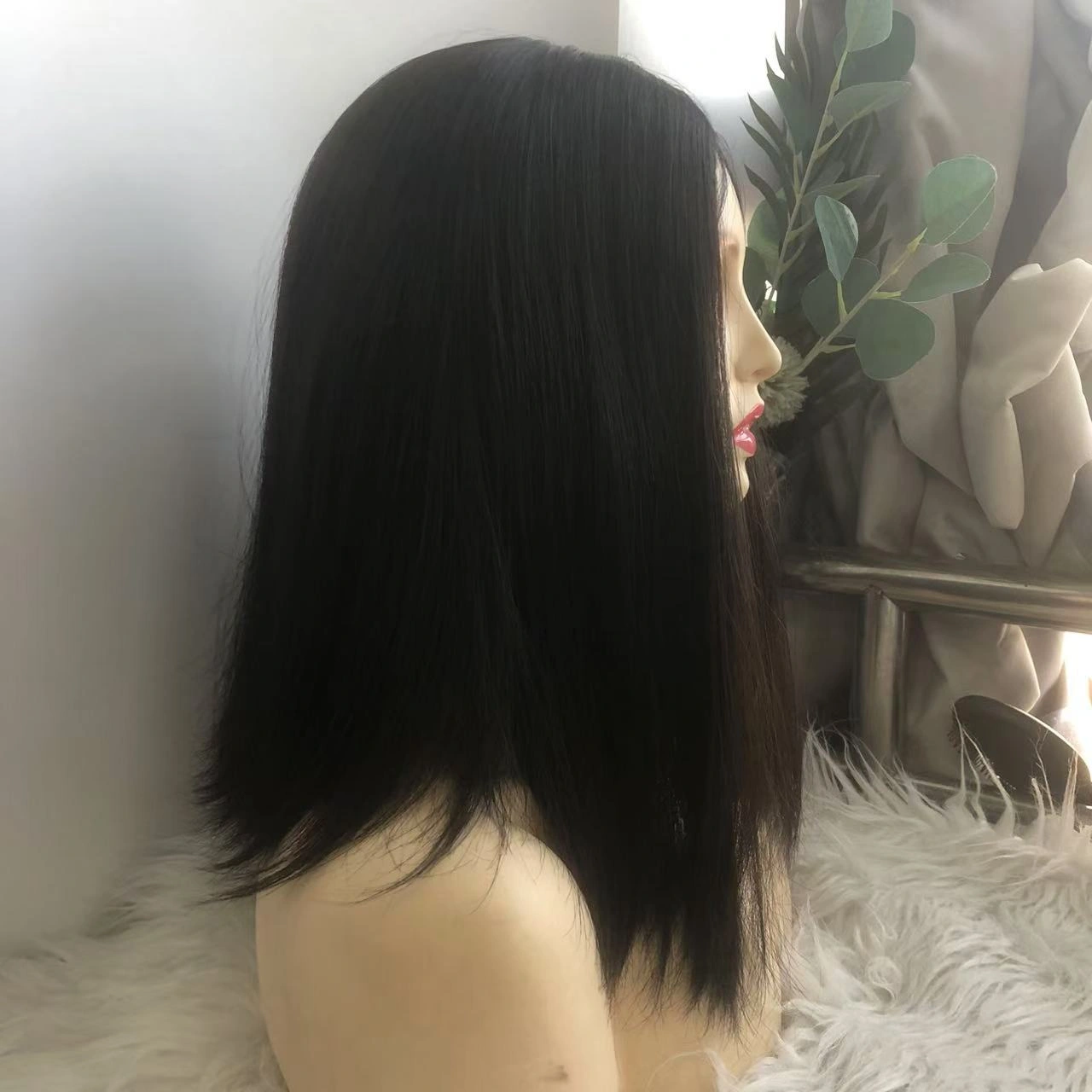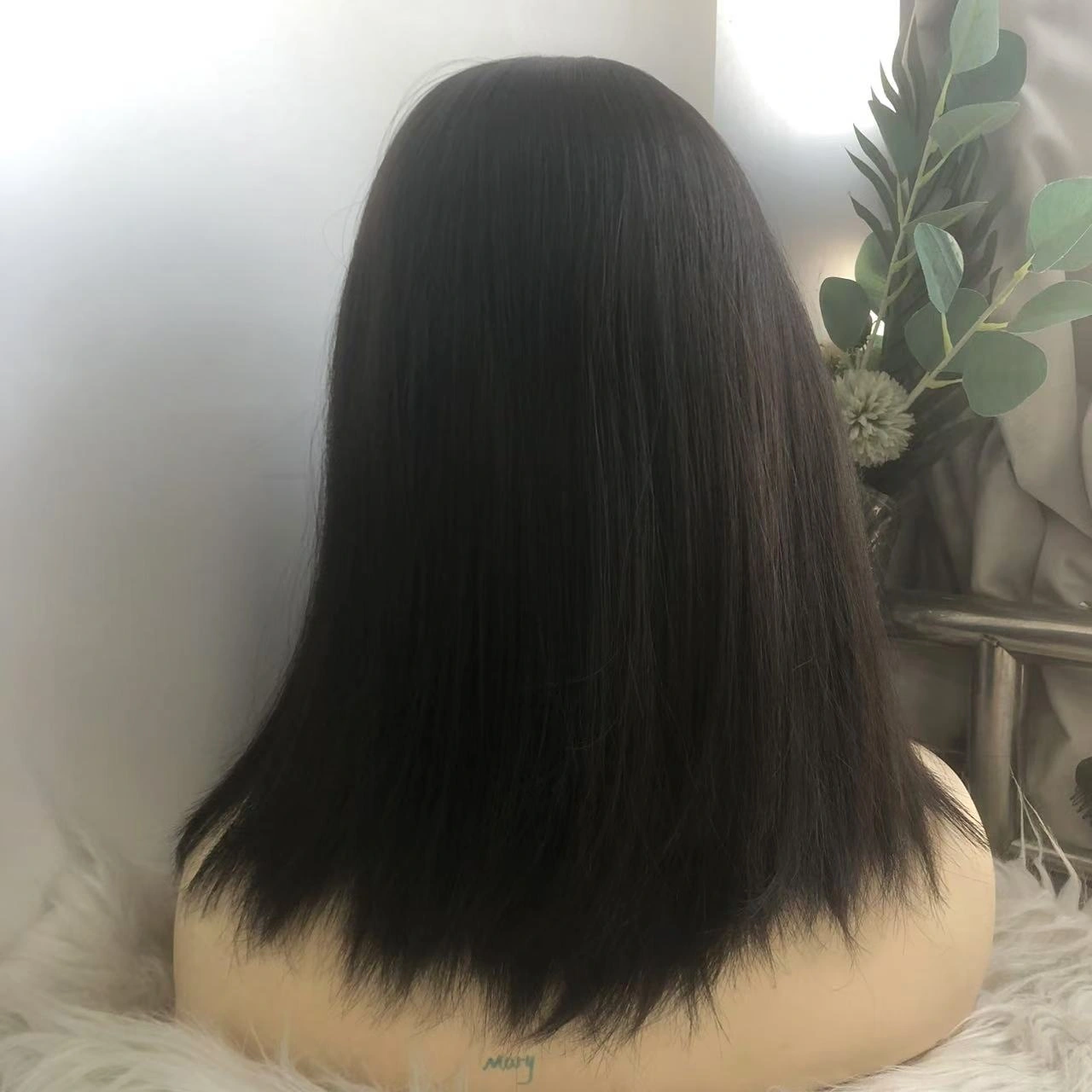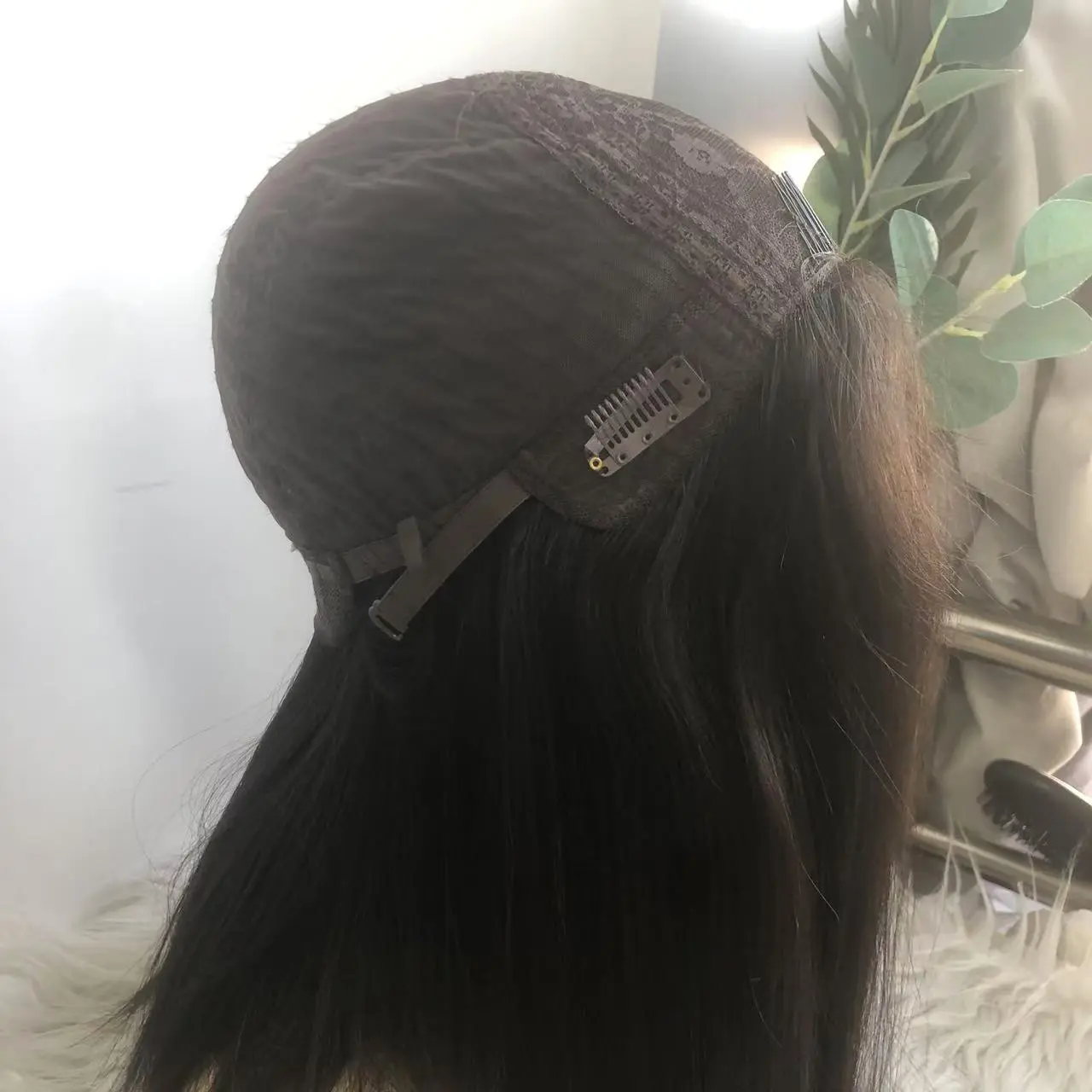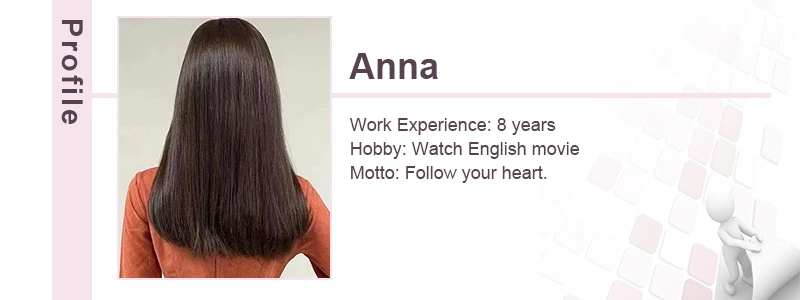High Quality Women Jewish Wig are an integral part of Jewish tradition and culture, particularly for Orthodox Jewish women. These wigs, known as sheitels, are worn by married women as a sign of modesty, as part of the religious requirement to cover their hair. The practice of wearing wigs has its roots in Jewish law and has evolved over centuries, reflecting both religious observance and fashion trends. This article provides a comprehensive guide to high-quality women’s Jewish wigs, including their history, cultural significance, materials, manufacturing processes, and market data, ensuring that readers understand the importance and value of these wigs in the Jewish community.
| Material | 100% Human Hair (European/Russian/Indian) or Premium Synthetic Fibers |
| Hair Type | Straight, Wavy, Curly |
| Cap Construction | Lace Front, Full Lace, Monofilament, Polyurethane Base |
| Length Options | Short (10-14 inches), Medium (16-20 inches), Long (22-30 inches) |
| Density | Light (100-120%), Medium (130-150%), Heavy (180% and above) |
| Hair Color | Natural Black, Brown, Blonde, Custom Colors |
| Styling Options | Heat-Friendly for Human Hair; Pre-Styled for Synthetic Wigs |
| Comfort Features | Breathable Cap, Adjustable Straps, Soft Lace Edges |
| Usage | Daily Wear, Religious Observance, Special Occasions |
| Lifespan | 1-3 Years (Human Hair), 6-12 Months (Synthetic Hair) |
| Customization | Available for Cap Size, Color, Length, and Texture |
| Packaging | High-End Wig Box with Care Instructions Included |
| Price Range | $500-$3,000 (Human Hair), $100-$500 (Synthetic Hair) |
| Production Time | 15-30 Days for Custom Orders |
| MOQ | Negotiable for Bulk Orders |
| Certifications | ISO 9001, SGS |

The custom of covering a married woman’s hair has its basis in Jewish law, particularly in the Talmud and later Jewish legal texts. According to Jewish tradition, a woman’s hair is considered private and intimate, and covering it serves as a way to maintain modesty and privacy. This practice is rooted in the concept of tzniut (modesty), which is a fundamental principle in Jewish law, particularly among Orthodox Jews.
Historically, women would cover their hair using scarves, hats, or veils. However, over time, wigs became a popular choice because they allowed women to maintain a sense of beauty and femininity while still adhering to the principles of modesty. The use of wigs became especially prominent in communities such as those in Eastern Europe during the 18th and 19th centuries, and it has since spread worldwide, particularly in Jewish communities in the United States, Israel, and the United Kingdom.

The materials used in the construction of Jewish wigs are one of the most important factors in determining their quality and price. High-quality wigs are typically made from either human hair or synthetic fibers, with human hair wigs being the preferred choice for their natural look, durability, and versatility.
Human Hair Wigs
Human hair wigs are the most desirable option due to their natural appearance, ability to be styled, and long-lasting durability. The hair used in these wigs is often sourced from countries like India, China, and Russia, where human hair is abundant and often donated or sold for wig-making purposes. The quality of the hair varies depending on its source, with Russian and European hair being considered the highest quality because of its fine texture and natural shine.
Key Characteristics of Human Hair Wigs:
Natural Look and Feel: Human hair wigs provide the most realistic appearance and texture, closely mimicking the look and feel of natural hair.
Durability: With proper care, human hair wigs can last for several years, making them a worthwhile investment.
Styling Versatility: These wigs can be dyed, curled, straightened, and treated like natural hair.
Breathability: The natural fibers of human hair allow better airflow, making them more comfortable to wear for extended periods.
Synthetic Wigs
While synthetic wigs are more affordable, they are generally less durable and versatile than human hair wigs. Synthetic wigs are made from fibers like polyester, acrylic, or nylon, and they are pre-styled, which means they don’t require as much maintenance as human hair wigs. They also retain their shape after washing, which makes them easier to care for.
Key Characteristics of Synthetic Wigs:
Affordability: Synthetic wigs are typically more affordable than human hair wigs.
Low Maintenance: These wigs don’t require frequent styling and hold their shape better over time.
Limited Styling Options: Unlike human hair wigs, synthetic wigs cannot be styled with heat tools such as curling irons or straighteners.
Less Breathable: Synthetic wigs can feel less comfortable and breathable compared to human hair wigs.

The process of making high-quality women Jewish wigs involves several stages, from sourcing the raw materials to the final styling and quality control checks. Each step is crucial to ensuring the wig’s quality, durability, and natural appearance.
Hair Sourcing and Selection
The first step in the wig-making process is sourcing high-quality hair. As mentioned, human hair is often imported from countries where large quantities of hair are available, such as India and Russia. The hair must be collected and sorted to ensure that all the strands are of a similar length and texture.
One important consideration in the sourcing process is the method of collection. Hair used for high-quality wigs is often cuticle intact, meaning the hair is gathered in a way that keeps the cuticle (the protective outer layer of the hair) aligned in the same direction. This minimizes tangling and ensures a smoother, shinier appearance.
Wig Construction
Once the hair is sourced and sorted, it undergoes a meticulous process of weaving or tying into a lace or polyurethane base. The base of the wig is designed to fit comfortably on the head and allow airflow to the scalp. Lace fronts, for example, are designed to create a natural-looking hairline, while polyurethane bases provide additional comfort and durability.
The hair is then sewn into the base with great attention to detail. High-quality wigs are often made by hand, ensuring precision and a more natural finish. The skill of the wig maker is crucial in creating a product that fits properly, looks realistic, and lasts for years.
Styling and Finishing
After the basic structure of the wig is complete, it is styled to suit the preferences of the wearer. This includes cutting the hair to the desired length, shaping the wig to create natural movement, and adding any finishing touches, such as coloring or texturing. Wigs made from human hair can be styled using heat tools, while synthetic wigs are usually pre-styled and cannot be changed.
The final step is quality control, where each wig is inspected for defects, such as uneven coloring, shedding, or poor construction. Only wigs that meet high standards of quality and craftsmanship are approved for sale.

The market for high-quality women’s Jewish wigs has seen significant growth in recent years, driven by increasing demand from Jewish communities around the world. Factors contributing to this growth include rising awareness of the importance of modesty in Jewish culture, advancements in wig technology, and a growing interest in fashion-forward, natural-looking wigs.
Global Market Size
The global wig market is valued at billions of dollars, with a significant portion of that dedicated to the production and sale of women’s wigs, including Jewish wigs. According to recent market reports, the global wig market is expected to grow at a compound annual growth rate (CAGR) of around 10% over the next several years, with high-quality wigs driving much of that growth.
The Jewish wig segment, in particular, is experiencing rapid expansion, particularly in countries with large Jewish populations, such as the United States, Israel, and the United Kingdom. This growth is being fueled by both the religious and aesthetic demands for high-quality wigs that maintain cultural traditions while offering versatility and beauty.
Consumer Preferences and Price Range
Consumers of high-quality Jewish wigs are willing to invest in wigs that offer a natural look, comfort, and durability. Prices for these wigs vary significantly depending on factors such as the type of hair used, the complexity of the construction, and the brand. Human hair wigs, particularly those made from European or Russian hair, can range from $500 to $3,000 or more, while synthetic wigs tend to cost between $100 and $500.
High-quality wigs from well-known manufacturers are often seen as status symbols in some Jewish communities, with certain brands gaining a reputation for excellence. These wigs are typically sold through specialized wig shops, both physical and online, catering to Jewish women who prioritize modesty, fashion, and quality.

EMEDA is a professional manufacturer specializing in high-quality women’s Jewish wigs. With years of experience in the industry, we pride ourselves on using premium materials and advanced craftsmanship to create natural, comfortable, and durable wigs that meet the highest standards of quality. Our wigs are designed to cater to the unique needs of Jewish women, combining tradition with modern elegance. Whether you’re looking for custom designs, wholesale opportunities, or reliable production partners, EMEDA is here to support your business. Contact us today for inquiries and collaboration opportunities—we look forward to working with you!

New customization and stock clearance
WhatsApp us